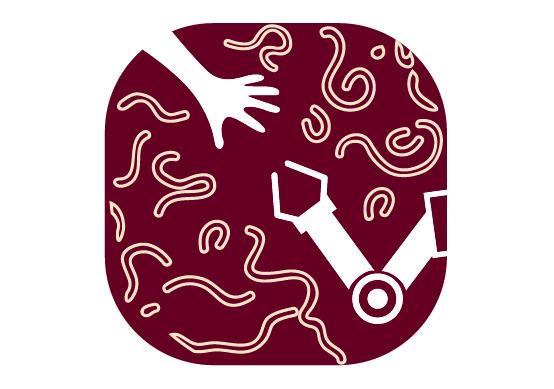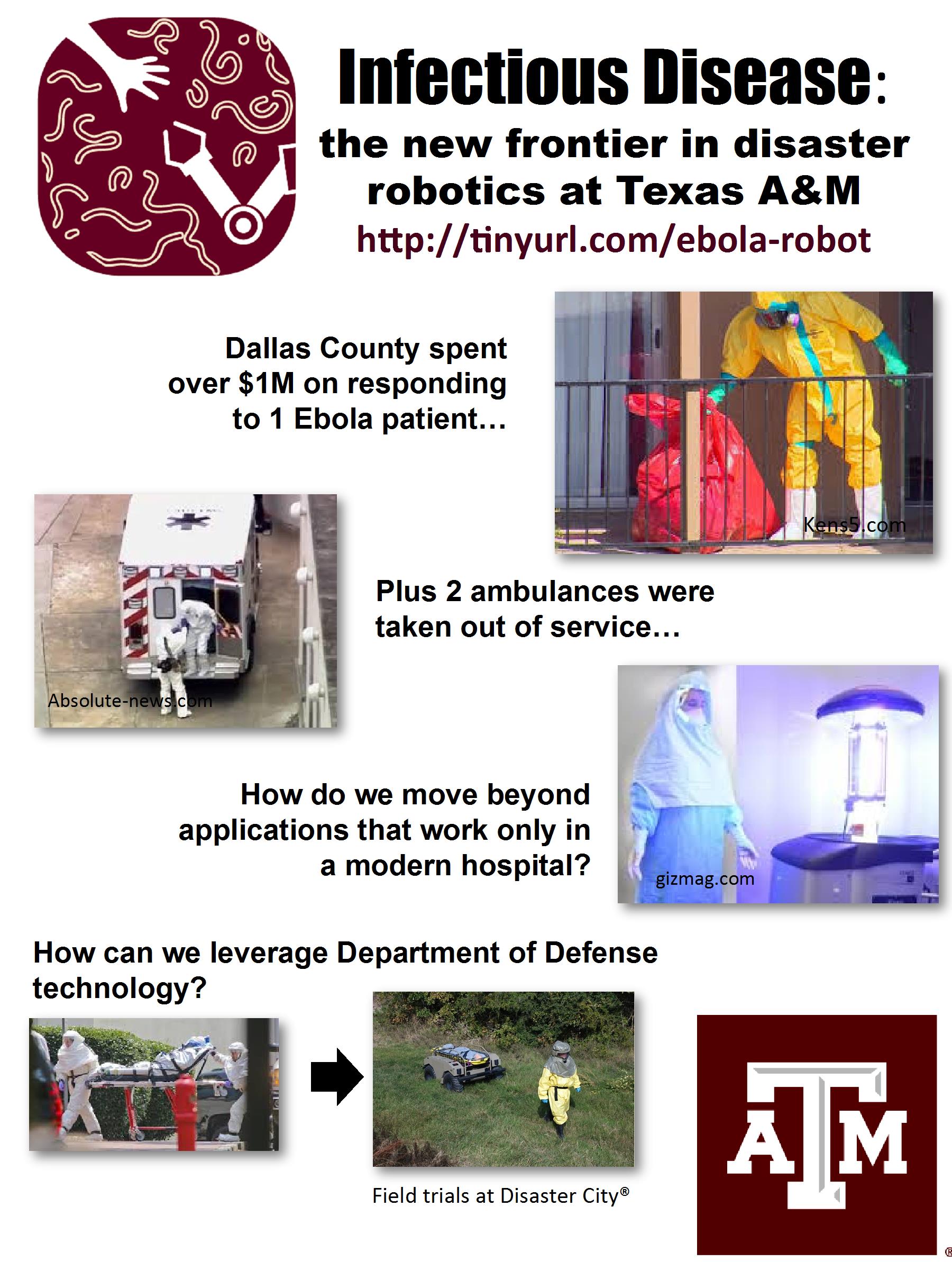Department of Computer Science and Engineering
| Office: 333 H.R. Bright Building | Office Hours: By appointment for Summer, Dr. Murphy will be on sabbatical from Aug. 28, 2015 to Jan. 18, 2016 |
| Fax: 979.845.1420 |
| Email: murphy at cse.tamu.edu |
| To schedule an appointment or demo please contact Ms. Kimberly Mallett |
| Phone: 979.845.8737 |
| Fax: 979.845.1420 |
| E-mail: kimberly at cse.tamu.edu |
| Follow Dr. Murphy on: |
| Blog: Director's Blog |
| For CRASAR updates: |
Ebola Response

PI: Dr. Robin Murphy
Co-PI: Eric Rasmussen, MD, MDM, FACP
We are working with national and international medical and disaster professionals to extract formal use cases for ground, aerial, and marine robots for medical response and humanitarian relief to the Ebola and future epidemics. The robotics community cannot provide robots without understanding the needs and engineering mistakes or mismatches will both be financially costly and delay the delivery of effective solutions. There is no comprehensive statement of the missions that robots can be used for during a medical event and general mission descriptions (e.g. we need a robot to transport bodies) do not capture the design constraints on a robot. Our work considers the entire space of a medical event (hospitals, field medicine, logistics, security from riots), nor has the disaster or medical robotics communities been engaged with epidemics.
The project will have immediate broad societal impact, enabling more effective response to epidemics, protecting Americans who are providing medical and humanitarian assistance, and preserving jobs in the robotics industry which has been buffeted by declining DoD budgets. The project outcomes will allow robotics companies to confidently pre-position/re-position products and to incorporate the findings into R&D investment strategies. The effective use of robots will provide responders with tools for the short term, manage expectations of robotics technology in general, and help encourage the relevant agencies to participate in the National Robotics Initiative.
More information and activities:
- PBS Newshour on Robots for Ebola
- Report Blog on the Safety Robotics for Ebola Workers for the White House OSTP/National Robotic Initiative workshop and the Texas A&M Workshop on Robotic, Automation and Cyber Physical Systems for Medical Response to Disasters Workshop
- 2015 Robotics: Science and Systems Workshop on Robotics for Advanced Response to Epidemics (RARE), July 17, 2015, Rome, Italy
